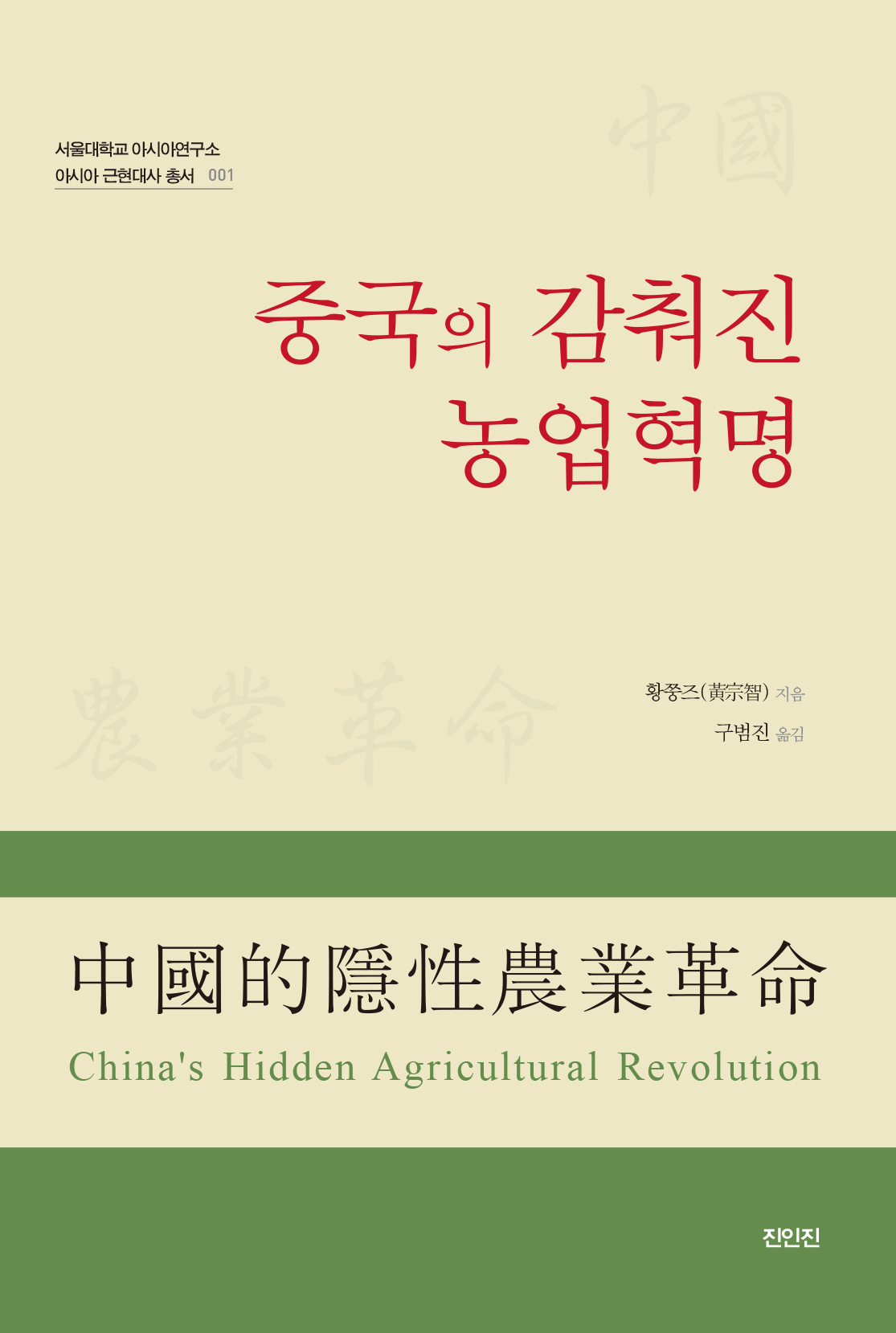China’s Hidden Agricultural Revolution

- Authors: Philip C.C. Huang, transl. by Bumjin Koo
- Publication Date: June / 2016
- Publisher: Zininzin
『China’s Hidden Agricultural Revolution』 is composed of two volumes and there are 11 chapters in total. The first volume deals with the development of agricultural economy in China, while the second volume discusses the current situation and prospects for the Chinese economy. In the first volume, the author describes the phenomenon of “growth without development” due to “population pressure” peculiar to China, which had been constraining increases in production per capita for six centuries since the Ming and Qing dynasties, offsetting developments in agricultural production. China’s agricultural revolution proceeded largely unnoticed after the country’s opening in the 1980s. The author calls it “hidden” because it came in an unconventional way of switching to the production of higher-value agricultural products and was driven by modernization, which increased the demand for such goods. In the second volume, Huang analyzes the characteristic feature of Chinese economy: the resilience of different types of hired labor economy and division into petit bourgeois and middle class despite extensive urbanization and industrialization. The author proposes building a sustainable, high-profit, symbiotic agricultural system with small farming as a basic production unit and reduced gap in public services between urban and rural regions.
